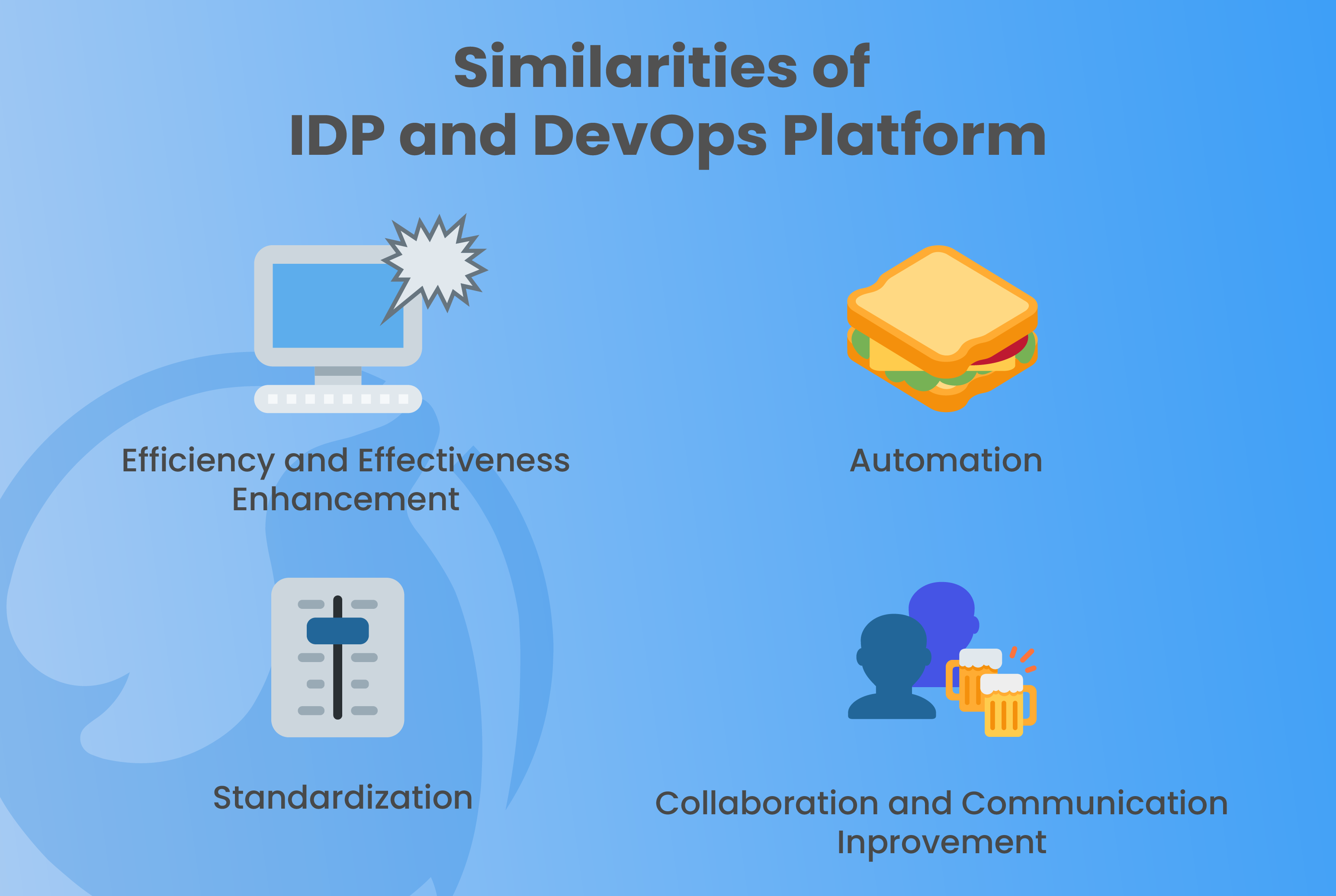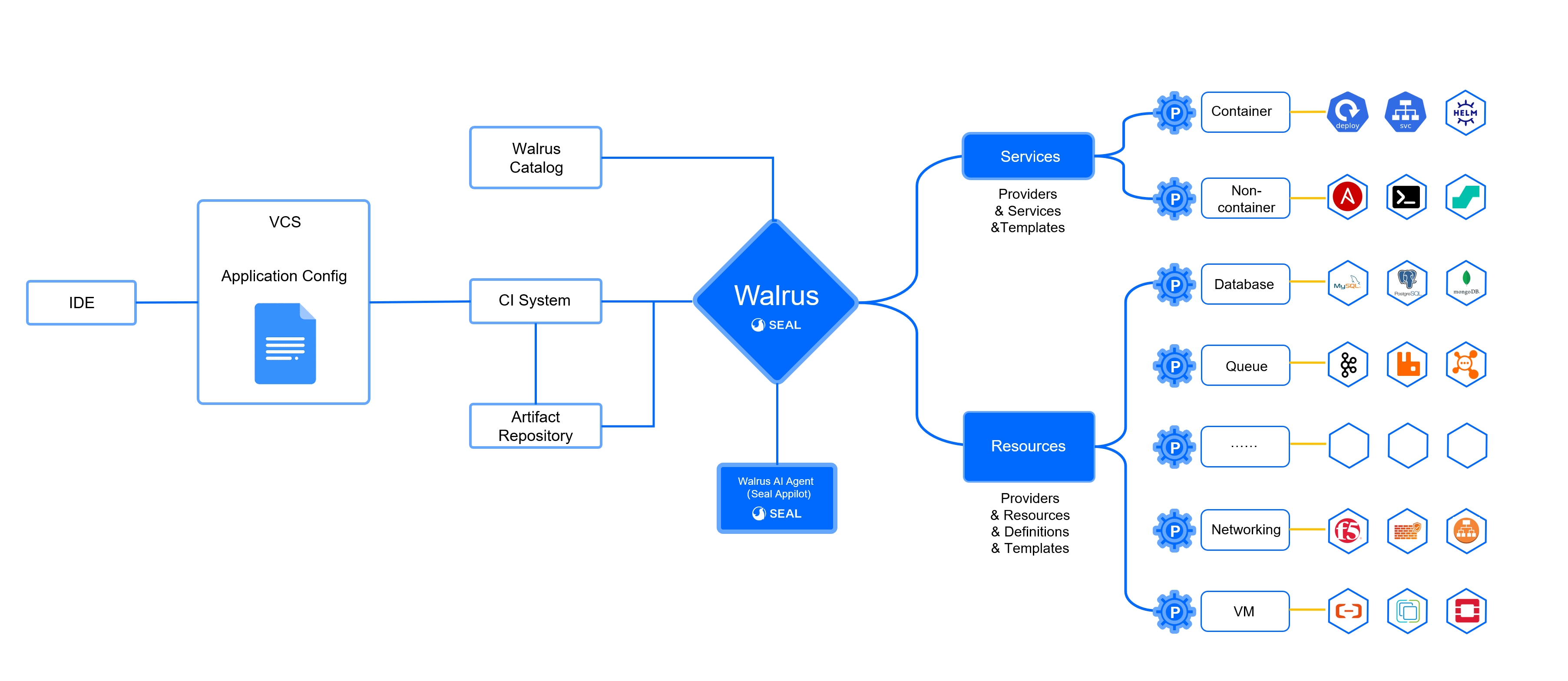IDP vs. DevOps Platform: Unveiling Key Differences
Developing software involves a multitude of tools, technologies, and practices in a constantly evolving process. The aim is to deliver software faster and more efficiently, requiring effective collaboration, automated tasks, and efficient environment management.
However, the growing complexity of software architecture, the variety of tools and platforms, and the heightened emphasis on security and compliance make software development increasingly challenging.
To tackle these challenges, organizations are turning to Internal Developer Platforms (IDP) or DevOps Platforms, tailored to their unique needs. These solutions assist engineering teams in streamlining the software delivery lifecycle by offering a unified framework for planning, coding, testing, deploying, and monitoring applications. The ultimate goal is to enhance productivity.
IDPs and DevOps Platforms: Aligning Development Advancements
IDPs and DevOps platforms share common goals, methods, and processes.
Primarily, both IDPs and DevOps platforms share the overarching goal of enhancing the efficiency and effectiveness of software development. IDPs achieve this by offering a standardized set of tools, infrastructure, and processes, ultimately improving developers' productivity, and fostering collaboration.
Similarly, DevOps platforms concentrate on facilitating rapid and dependable software delivery through the automation and integration of all stages of the software development process. The core objective of both platforms is to expedite software development, making it more efficient and effective.
Moreover, both platforms leverage automation as a key strategy to simplify development. Automation stands out as a fundamental feature in these platforms, allowing developers to concentrate on more critical tasks by automating routine processes.
IDP can automate common development tasks such as code building and testing, providing developers with self-service tools to manage their own development environments. Similarly, DevOps platforms automate the entire CI/CD process, from code development to production deployment, reducing the time and effort required for delivering software updates.
The key concept shared by both is the provision of a standardized set of tools and processes for developers and other team members.
IDP offers a standardized toolkit and infrastructure, such as containerization technology, to create a uniform development environment for developers across different teams and projects.
Likewise, DevOps platforms provide tools for managing infrastructure as code, ensuring consistency and repeatability of infrastructure across different environments.
Furthermore, collaboration and communication are crucial for successful software development, and both solutions focus on improving collaboration and communication among team members.
IDP provides tools for version control, code review, and collaboration, aiding developers in working more effectively together. Similarly, DevOps platforms can offer tools to monitor application performance and availability, collecting and analyzing metrics and logs to quickly identify and address issues.
The purpose of both IDP and DevOps platforms is to reduce the time and effort required to build applications. Understanding these similarities can help businesses make informed decisions about which platform to use and how to integrate it into their software development processes.

Key Differences Between IDP and DevOps Platforms
While both IDP and DevOps platforms aim to improve software development, there are key differences in their implementation and use cases. Let's discuss these differences through three specific examples.
Example 1: Configuring Infrastructure
DevOps Platform: In a DevOps platform, developers need to use various tools and services to configure infrastructure, such as cloud providers, configuration management tools, and coordination tools. Developers must learn how to use these tools and services, configure them correctly, and troubleshoot in case of errors. Coordination with the operations team is also necessary to ensure infrastructure compliance with security and regulatory requirements.
IDP: In contrast, on an IDP, developers can quickly configure infrastructure with just a few clicks. Using a unified platform interface, they abstract the complexity of underlying tools and services. Developers can choose from predefined templates or customize configurations based on their needs and preferences. Self-service guardrails ensure that the infrastructure meets security and compliance requirements.
Example 2: Deploying Applications
DevOps Platform: In a DevOps platform, developers need to use various tools and services to deploy applications, including source code management tools, continuous integration and delivery tools, and containerization tools. Developers require knowledge and skills in using these tools and services, integrating them, and monitoring deployments. Coordination with the operations team is essential to ensure successful and reliable deployment.
IDP: On an IDP, developers can deploy applications with a simple click or command. They can choose from predefined pipelines or workflows tailored to their needs and preferences. Self-service feedback loops ensure successful and reliable deployments.
Example 3: Managing Applications
Another common task for software developers is managing applications after deployment, such as scaling them, updating with new features or bug fixes, and rolling back in case of errors.
DevOps Platform: In a DevOps platform, developers need to use monitoring tools, logging tools, alerting tools, etc., to manage applications. This requires learning how to use these tools and services, analyze and interpret the provided data, and take action when needed. Additionally, communication and coordination with the operations team are necessary to ensure smooth and secure application operation.
IDP: In an IDP, developers can manage applications through an internal developer portal. They can also access self-service dashboards and reports to obtain relevant and actionable information about their applications.
Key Differences Summary:
Emphasis: IDP emphasizes developer productivity and efficiency, providing a complete development environment and tools. DevOps platforms focus more on the automation and streamlining of the entire software delivery process, including continuous integration, continuous delivery, continuous deployment, automated testing, and monitoring.
Customization: IDP is more easily customizable than DevOps platforms. IDP allows development teams to choose their tools and technologies, integrating them into a coherent platform that suits their needs. DevOps platforms offer lower flexibility in tool selection and integration.
Self-Service: Compared to DevOps platforms, IDP can provide more self-service capabilities. IDP enables developers to provision their own resources, environments, and deployments without relying heavily on the operations or platform team. DevOps platforms require more involvement from operations to establish and manage pipelines.
Integrate Walrus with Your DevOps Pipeline
While IDP and DevOps platforms share some similarities, they have different focuses, scopes, and toolsets. IDP prioritizes developer autonomy and convenience, providing a flexible development environment with standardized tools and processes to enhance productivity and collaboration.
Empower your DevOps pipeline with Walrus, the versatile open-source application management platform.Seamlessly integrating with any existing pipeline through Walrus CLI, , it extends orchestration capabilities beyond containers to the entire application system. Manage diverse environments effortlessly, from testing to production, dynamically adapting to your needs. With Walrus, developers can prioritize software delivery, free from the hassles of intricate configurations.
Take it a step further with Appilot, our AI agent designed to streamline application management and deployment. Explore the diagram below as your guide to constructing an enterprise-grade IDP using Walrus and Appilot.

Welcome to join the community!
Discord: https://discord.gg/fXZUKK2baF
Twitter: https://twitter.com/Seal_io
LinkedIn: https://www.linkedin.com/company/seal-io



 GitHub
GitHub





